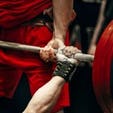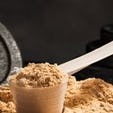Smart trainers will tell you that there is no “must-do” exercise. For as much hype as squats and bench presses get, there are many other movements you can perform that will net you virtually the same results as these classic lifts. However, should you propose to remove the single-leg Romanian deadlift (RDL) from a trainer’s program, you may start an argument that sends barbells flying, as the single-leg RDL is seen as a staple in functional strength training—and there’s really no substitute for it.
How To Do The Single-Leg Romanian Deadlift Like A Pro
Consider this your guide to an exercise that’s truly irreplaceable for muscle, mobility, and overall fitness.
What Is The Single-Leg Romanian Deadlift?
You probably know what a deadlift is already. There’s a barbell on the floor, and you bend down to pick it up. A Romanian deadlift is a variation where you start at the finish position of the classic deadlift (standing tall, hips locked out), and then bend your hips back, allowing your knees to bend until you feel your hamstrings stretch. The single-leg Romanian deadlift is simply the unilateral version of that movement.
Like these other deadlifts, the single-leg RDL is a hinge movement—the main training effect occurs from the bending and extending of the hips. The single-leg RDL can be done with a barbell, one or two dumbbells/kettlebells, a steel mace, sandbag, or virtually any other training implement you like. You stand on one leg, hold a load in one (or both) hands, and bend your hips back while keeping a long spine. The movement trains the whole back side of the body (called the posterior chain) while developing balance and improving mobility in the hips.
Due to its versatility, the single-leg Romanian deadlift can be used everywhere in a workout program from the warmup to the finisher.
Single-Leg Romanian Deadlift Benefits vs. A Normal Deadlift
Old-fashioned, two-footed deadlifts train the hell out of the glutes and hamstrings and build overall muscle strength, size, and power. While the single-leg Romanian deadlift can’t be loaded as heavy due to the less stable position it puts you in, it offers a lot of other advantages that the classic deadlift doesn’t, or at least serves them up with a lower risk of injury. “I like it best for developing pelvic control while the legs are separate and moving independently of each other,” says Jim “Smitty” Smith, co-founder of the C.P.P.S. certification and owner of Diesel Strength & Conditioning. “This mimics running, sprinting, carrying odd objects, and crawling patterns, which we all should be able to do.”
Balance and coordination
Standing on one leg activates muscles from the hip down to the foot in order to keep you from falling. On higher-rep sets, you may even find that the bottoms of your feet burn from single-leg RDL’s, as you struggle to maintain balance. Not only are you training stability on one leg, which is especially important for playing sports that have you running and jumping, you’re also training a hip hinge at the same time. Learning to flex and extend your hips powerfully, one leg at a time, will translate directly into faster running, higher jumping, and quicker changes of direction.
Stronger posterior chain

The single-leg RDL works all the same muscles as any other deadlift variant, so you know you’re getting a great workout for your glutes, hamstrings, lats, and spinal erectors (just to name a few). But you’ll also train them through a greater range of motion than you do on bilateral deadlifts. The arc of the movement on the single-leg lift allows your hips to bend further, activating more of the hamstrings. So what you sacrifice in load, you make up for with range, and that makes the single-leg RDL a fine choice for a bulk-building program.
Increased mobility
Because you can move into greater ranges of motion, the single-leg RDL is a great movement for improving the mobility of your hips and stretching out your hamstrings. Trainers often prescribe bodyweight single-leg RDLs in a warmup routine to loosen the hips and hammies before doing squats or conventional deadlifts. It’s also a great move to do on your off days as part of a mobility routine that helps you recover from workouts. If you practice yoga, you’ll notice that standing-split poses like warrior 3 are basically bodyweight single-leg Romanian deadlifts.
Improved posture and body mechanics
Like yoga, the single-leg RDL can improve the way you move and carry your body. Learning to hinge properly is essential for working out safely. If you can’t hinge, your lower back will take on the brunt of any load you’re lifting, and that leads to injuries. Poor hingeing during a heavy bilateral deadlift can hurt you badly. Look around your gym at the people who deadlift with a round back… they’re ticking time bombs.
In contrast, if you don’t hinge correctly during a single-leg Romanian deadlift, you know it right away. You’ll feel it in your back and you’ll lose balance. So the single-leg RDL is a great teaching tool. It also forces you to draw your shoulders back into what we call a “proud chest” position. This reinforces good posture that makes all your lifts more efficient and safe (and makes you look stronger and healthy too).
Anti-rotation core stability
When you stand on one leg, your body immediately senses that it’s out of whack. If you start bending at the hips so that your torso moves toward the floor, it’s going to have a tendency to twist toward the side that isn’t supported with a leg underneath it. Your core muscles have to kick in hard to prevent that rotation from occurring, so the single-leg RDL is very much a core exercise in addition to a leg and back movement.
When you develop the stability to resist rotation when it’s not wanted, you’ve taken a giant step toward preventing lower-back injuries.
Restored muscle balance
Many people avoid unilateral training because it’s challenging (and not as soothing to the ego, since you can’t go as heavy as when you lift with both arms or legs at the same time). As a result, they develop muscle and strength imbalances, i.e., the stronger limb takes over for the weaker limb. This is particularly common in the lower body, where you might see the hips shift to one side on a squat or deadlift movement, or you’re able to do 10 lunges on one leg but can only muster eight good reps on the other.
The single-leg RDL helps to expose these imbalances and correct them, so that both sides of the body get to (at least nearly) equal strength.
What Muscles Are Used in the Single-Leg Romanian Deadlift?
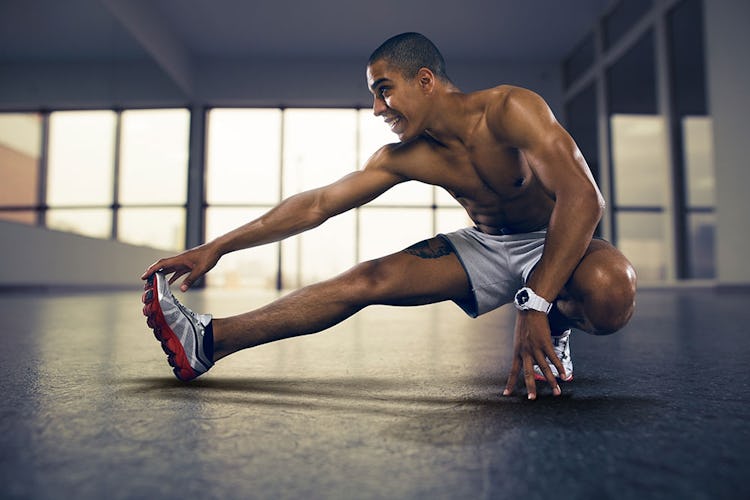
The short answer is “most of them.” But to be more specific, we’ll list the main ones you’ll feel here:
- Glutes
- Hamstrings
- Lats
- Traps
- Spinal erectors
- Obliques (core)
- Forearm flexors
- Calves
- Peroneus longus (outer shin)
- Posterior tibialis (in the foot)
How Do You Stretch Before Doing A Single-Leg Romanian Deadlift?
One of the great features of the single-leg RDL is that it serves as a warmup all by itself. You can use it to prepare your lower body for a heavy workout and stretch out your hamstrings at the same time. If using it in your warmup, Smitty recommends performing 2–3 sets of 5–10 reps per leg using only your bodyweight, or very light dumbbells.
How To Perform The Single-Leg Romanian Deadlift
Step 1. Hold a dumbbell or kettlebell in your right hand and stand on your left leg. Draw your shoulder blades down and together (think “proud chest”), and tuck your tailbone under slightly so that your pelvis is parallel to the floor.
Step 2. Reach your left arm out to your side and make a fist—this will help you keep your balance. Take a deep breath into your belly and brace your core, pulling your ribs down and locking them in place.
Step 3. Begin bending your hips backward so that your torso moves toward the floor. Focus your eyes on the floor so you don’t hyperextend your neck. Keep your head, spine, and pelvis aligned as you move, and allow your left knee to bend as needed. Your right leg will naturally extend behind you—squeeze the glutes on that side as it does.
Step 4. Try to keep your hips level with the floor, but it’s OK if your right toes rotate outward a little. Maintain your proud chest position—the weight will try to pull your shoulders forward, so fight to keep them locked back and down. Bend as far as you can without losing your alignment. You should feel a stretch in the hamstrings of the working leg.
Step 5. Squeeze your glutes as you come back up, extending your hips to lockout. You can touch your right foot down for a moment if you need to regain your balance, and then begin the next rep. Perform an equal number of reps on each side.
Form mistakes to watch for:
- Twisting the hips to one side as you bend them back. Think about pulling yourself down with your hip flexors (the muscles on the front of your hip that raise your leg up) so that your hips bend as a hinge does. Your hips and shoulders must be pointing straight in front of you throughout the exercise.
- Rounding your lower back. This is an absolute no-no. Keep a long spine at all times with core braced.
- “Don’t come up on your toes or rock back on your heels,” says Smitty. Doing so may indicate tightness in your hips, so if you can’t perform the lift flat-footed, try an easier version (see Single-Leg Romanian Deadlift Alternatives below).
- Twisting your torso to reach the weight to the floor. Your shoulders must stay level and in line with your hips.
Expert tip:
“The weight of your body should load into the center of your planted foot,” says Smitty. To do this properly, your foot needs to be arched so that it can provide the maximum amount of stability. Before you begin your set, try to “screw” your foot into the floor. Twist it down as if it were a screw and the floor were wood—don’t let your foot rotate or roll over, but make it feel tense and deeply rooted into the floor.
“Grip the ground with your toes,” says Smitty. The arch in your foot should rise. If you need help feeling what it’s like to have your arch turn on, keep your heel on the ground and raise your toes up as high as you can. “When you put your toes back down, try to pull them toward your heel.” Your foot should arch hard and you’ll feel stable.
How To Use The Single-Leg Romanian Deadlift In Your Workouts
As mentioned above, the single-leg RDL fits in well as part of your warmup routine. You can also use it as a main lift in a strength workout. Say you’re doing a full-body session comprising push, pull, squat, and hinge movements (one exercise for each movement pattern). You could choose the single-leg Romanian deadlift as your hinge exercise. If you want to load it heavy, you might go for reps of 5–8. If you want to train it in higher rep-ranges, you could do reps of 12–20. Be careful doing high reps, though. Lower-rep sets are better for learning an exercise, as the set will end before you’re very fatigued and about to break form. As you get more experienced and conditioned, you can perform higher reps to push your muscle endurance and cardiovascular capacity.
Of course, the single-leg RDL is most often used as an assistance exercise to support performance on the barbell squat and deadlift, so it works well when done second, third, or fourth in a leg workout for moderate sets of moderate reps. “I’ll usually have clients do single-leg RDLs as part of their assistance work for 3–4 sets of 8–12 reps per leg,” says Smitty. The move is typically performed as shown in the video above, with one dumbbell, but it can be done with two (if you want to make it less of a balancing act) or with a barbell (if you want to load it as heavy as possible). For an extreme balance challenge, you can hold the dumbbell on the same side as the leg you’re standing on, but we don’t suggest you start off learning the exercise that way.
Another option is to use a barbell but treat it like a dumbbell, by gripping the sleeve of the bar (where you load plates) and sliding the other end into a landmine unit. This will allow you to load the exercise heavy with less challenge to your balance (see below).
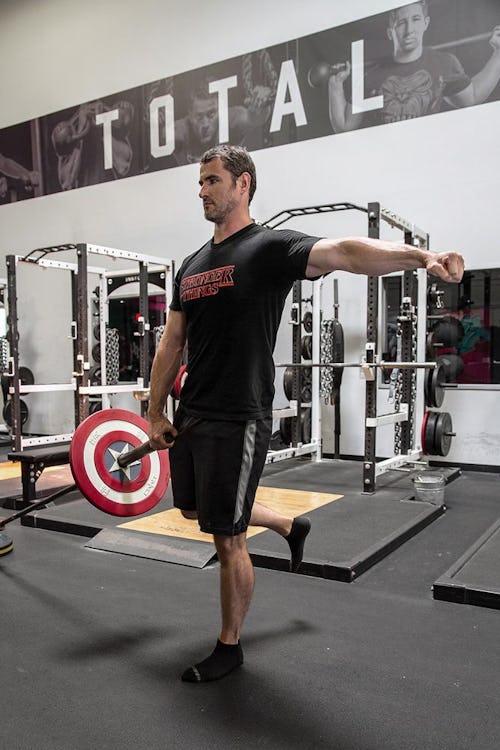
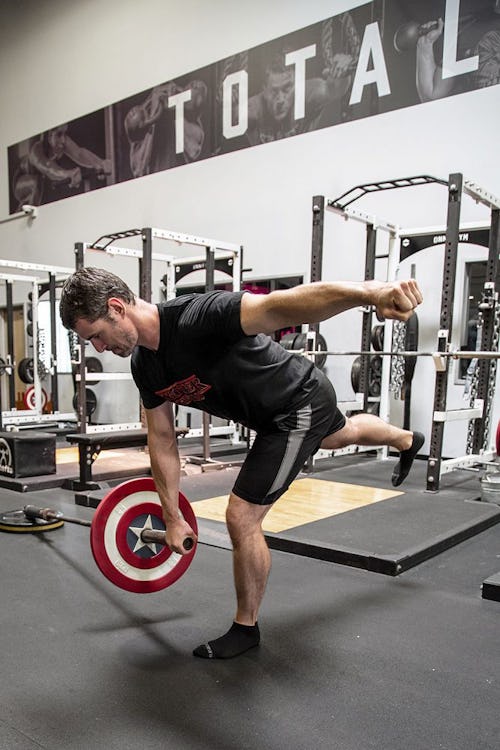
A trap bar can also be used with the single-leg RDL. This can spare your lower back some stress versus the barbell version because the weight is held at your sides. As the load is closer to your center of gravity, you won’t have to lean your torso as far forward as you would doing a straight-bar RDL, and you won’t have the same shear forces acting on your spine. As a trade-off, however, you won’t get quite the same activation of the posterior chain muscles.
See the single-leg Romanian deadlift in action in these workouts.
Single-Leg Romanian Deadlift Alternatives
At the top of this article, we said that the single-leg RDL was irreplaceable. But that doesn’t mean it can’t be modified—regressed or advanced depending on your goals and level of expertise. If you’re having trouble with the balance component, try staggered-stance RDLs for a while (aka kickstand RDLs). In this case, you simply keep the foot of the non-working leg on the floor as you perform the hip hinge movement. You’ll get a great stretch in your butt and hamstrings, and most of the benefits of unilateral training, but without having to worry about tipping over. To gently progress to doing the move one-legged, you can hold on to the support beam of a power rack, or even a foam roller that’s held vertically and balanced on one end.
To add more load to the movement, you can wrap a band around your hips and attach the other loop end to a power rack/sturdy object. “As you come up from the bottom position, the band’s resistance will overload the hip extension portion of the exercise,” says Smitty. Of course, conventional bilateral RDLs are a natural progression, as are good mornings, which are essentially the same movement but with the barbell held on the back of your shoulders for an additional posterior-chain challenge. Back extensions done on a 45- or 90-degree bench will work most of the same muscles as well, and are gentler on the lower back than the RDL or good morning.
Smitty is a proud supporter of the Shawn Perine Memorial Fund, which benefits environmental and animal charities, as well as after-school programs for children.
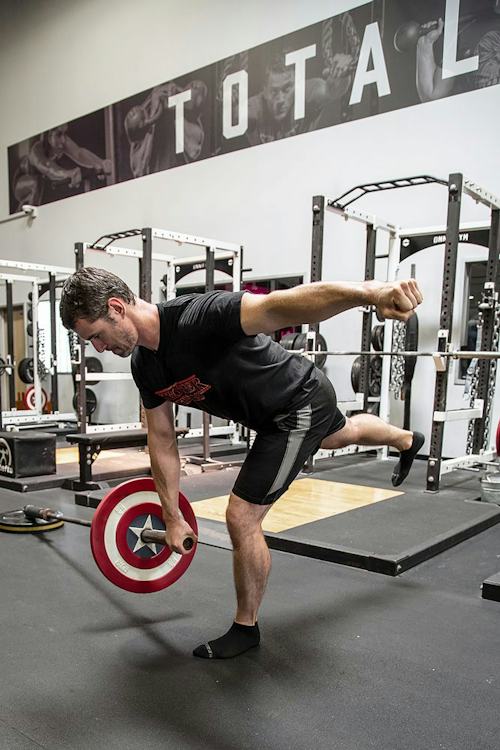
)
